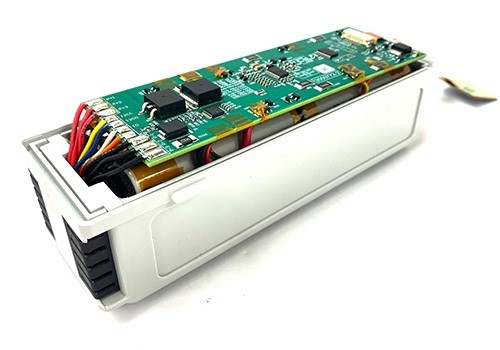Lithium-ion batteries are the most commonly used rechargeable batteries in today's electronic devices. Understanding the composition and functionality of these batteries is essential for anyone looking to make informed decisions about their use and maintenance.
The Basics of Lithium-Ion Battery Chemistry
Lithium ion batteries rechargeable are composed of several key components, including a positive electrode (cathode), a negative electrode (anode), and an electrolyte. The cathode is typically made of lithium metal oxide, while the anode is typically made of graphite. The electrolyte, which allows lithium ions to move between the electrodes during charging and discharging, is typically a lithium salt dissolved in a solvent.
How Lithium-Ion Batteries Rechargeable Work
During charging, lithium ions move from the cathode to the anode through the electrolyte, where they are stored in the anode's structure. When the battery is discharging, the process is reversed, and the lithium ions move back to the cathode, releasing energy in the form of electrical current. This process can be repeated thousands of times, making lithium-ion batteries ideal for use in rechargeable electronic devices.
Advantages of Lithium-Ion Batteries Rechargeable
One of the main advantages of lithium-ion batteries is their high energy density, which allows them to store a large amount of energy in a relatively small and lightweight package. This makes them ideal for use in portable electronic devices such as smartphones, laptops, and electric vehicles. Additionally, lithium-ion batteries have a low self-discharge rate, meaning they can hold their charge for extended periods when not in use.
Safety Considerations
While lithium-ion batteries offer many benefits, it is essential to handle them with care to avoid safety hazards such as overheating, short circuits, and fires. Proper charging practices, avoiding physical damage to the battery, and using reputable chargers and devices are crucial steps in ensuring the safe operation of lithium-ion batteries.
Continuous Improvement and Innovation
As technology advances, researchers and manufacturers are continually striving to improve the performance, safety, and cost-effectiveness of lithium-ion batteries. Innovations such as advanced electrode materials, solid-state electrolytes, and new manufacturing techniques are driving progress in the field of lithium-ion battery technology. These advancements promise to further enhance the energy density, cycle life, and safety of lithium-ion batteries, paving the way for new applications and opportunities in the future.
Temperature Management
Temperature management is critical for the safe and efficient operation of lithium-ion batteries. High temperatures can accelerate battery degradation and increase the risk of thermal runaway, while low temperatures can reduce battery performance and capacity.
Manufacturers implement various thermal management techniques, such as thermal insulation, heat sinks, and temperature sensors, to maintain optimal operating conditions for lithium-ion batteries. By carefully controlling the temperature during charging, discharging, and storage, users can maximize the lifespan and reliability of lithium-ion batteries while ensuring safe operation in a wide range of environments.
Emerging Power is committed to providing high-quality lithium-ion batteries and charging solutions for various applications. With our expertise and dedication to excellence, we continue to push the boundaries of battery technology to meet the evolving needs of our customers.
Wrapping Up
Lithium-ion batteries rechargeable are an integral part of modern technology, powering everything from smartphones to electric vehicles. By understanding their composition and functionality, users can make informed decisions about their use and maintenance, ensuring optimal performance and safety.

